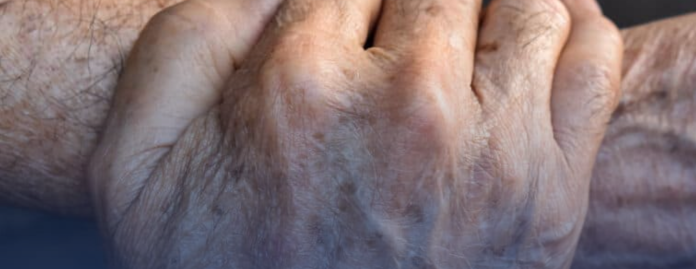As we age, our skin undergoes various changes, and one noticeable transformation is the emergence of dark spots on our hands. Also known as age spots or solar lentigines, these spots result from the overproduction of melanin, the natural pigment responsible for skin color. While dark spots are generally harmless, many individuals seek ways to diminish or prevent them. In this article, we will explore eight factors contributing to the development of dark spots on the hands and effective strategies to address and prevent them.
1. Vitamin E Deficiency:
The aging process can exacerbate dark spots, and studies suggest that a deficiency in vitamin E may contribute to their formation. While human evidence is limited, incorporating vitamin E-rich foods into your diet, such as sunflower seeds, almonds, and spinach, may aid in reducing dark spots.
2. Age Over Fifty:
Beyond the age of fifty, signs of skin deterioration and discoloration may become more evident. The diminished production of collagen and elastin, essential proteins for skin health, contributes to the development of dark spots over time.
3. Fair Skin Sensitivity:
Individuals with fair skin are more susceptible to age spots due to lower melanin levels. Fair-skinned individuals should take extra precautions when exposed to sunlight to prevent the formation of dark spots on hands, face, and arms.
4. Sunburn History: Past experiences of severe sunburns, often a consequence of inadequate sun protection knowledge, can lead to long-term skin damage, including the development of age spots. Understanding the importance of sun protection is crucial in preventing future skin problems.
5. Tanning Bed Usage:
Contrary to the belief that a tan signifies good health, the use of tanning beds can contribute to skin damage and dark spot formation. The UV lights in tanning beds mimic the sun’s rays, causing similar adverse effects on the skin.
6. Prolonged Sun Exposure:
Frequent and prolonged exposure to sunlight accelerates melanin production, leading to the aggregation of pigmentation and the appearance of dark spots. Proper sun protection measures are essential in mitigating this risk.
7. Genetic Predisposition:
Genetics play a role in determining susceptibility to dark spots. If your parents or grandparents experienced age spots, you may be genetically predisposed. While you can’t alter your genetics, proactive measures can be taken to minimize the risk.
8. Artificial UV Sources:
Apart from natural sunlight, exposure to artificial UV sources, such as black-light lamps and certain types of bulbs, can contribute to dark spot formation. Understanding and limiting exposure to these sources is crucial in skin protection.
Treatment Options:
Addressing existing dark spots involves various approaches, including over-the-counter skin-lightening products, vitamin C application, laser therapy, freezing procedures, and chemical peels. Consulting a dermatologist is recommended for personalized advice.
Prevention Strategies:
To prevent the onset of new age spots, adopting protective measures is paramount. These include seeking shade, avoiding peak sun hours, wearing protective clothing, using broad-spectrum sunscreen, and refraining from tanning bed usage.
Conclusion:
Dark spots on the hands, often considered a natural part of aging, can be managed and prevented through a combination of lifestyle changes, proper sun protection, and targeted treatments. Understanding the contributing factors and implementing proactive measures empowers individuals to maintain healthy and radiant skin as they age.
image source : power of positivity










